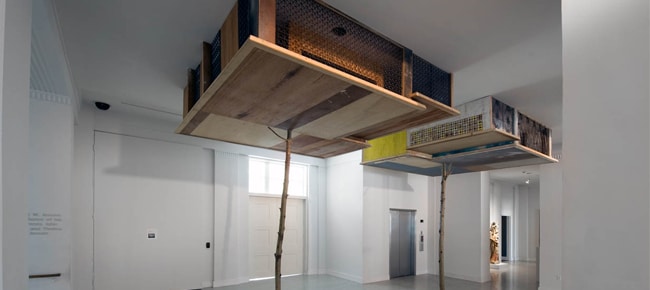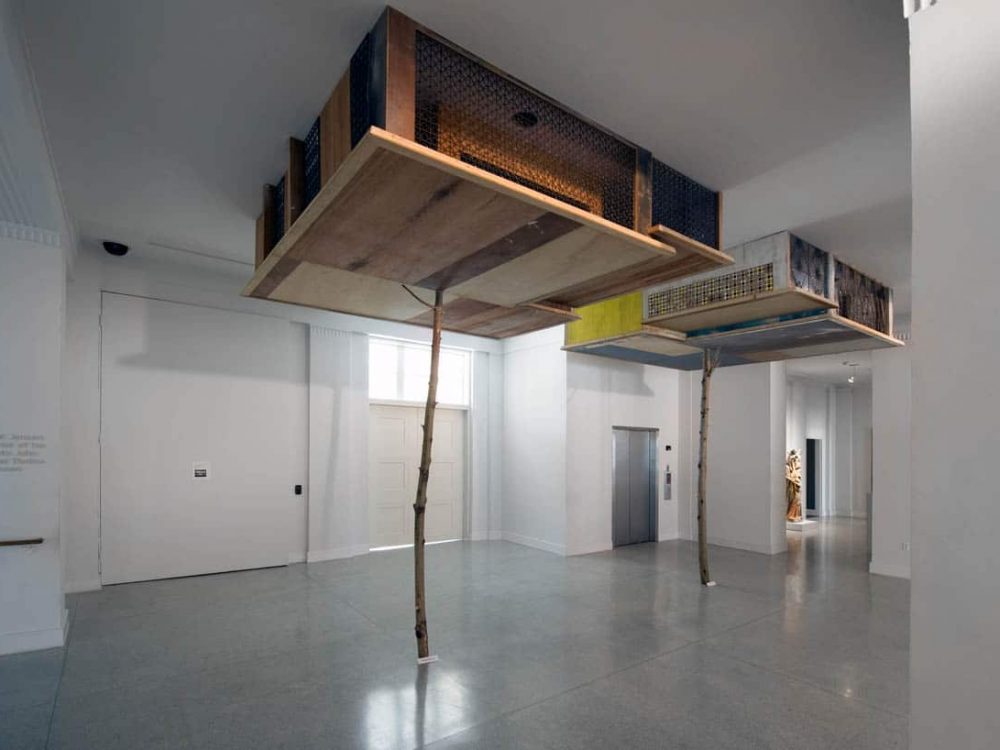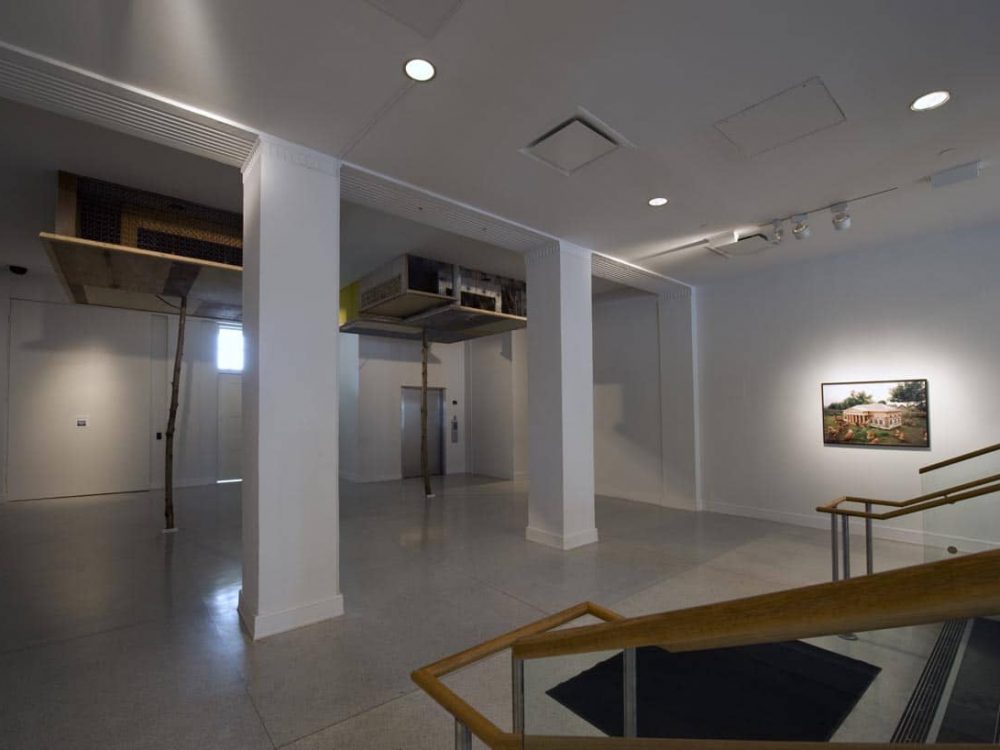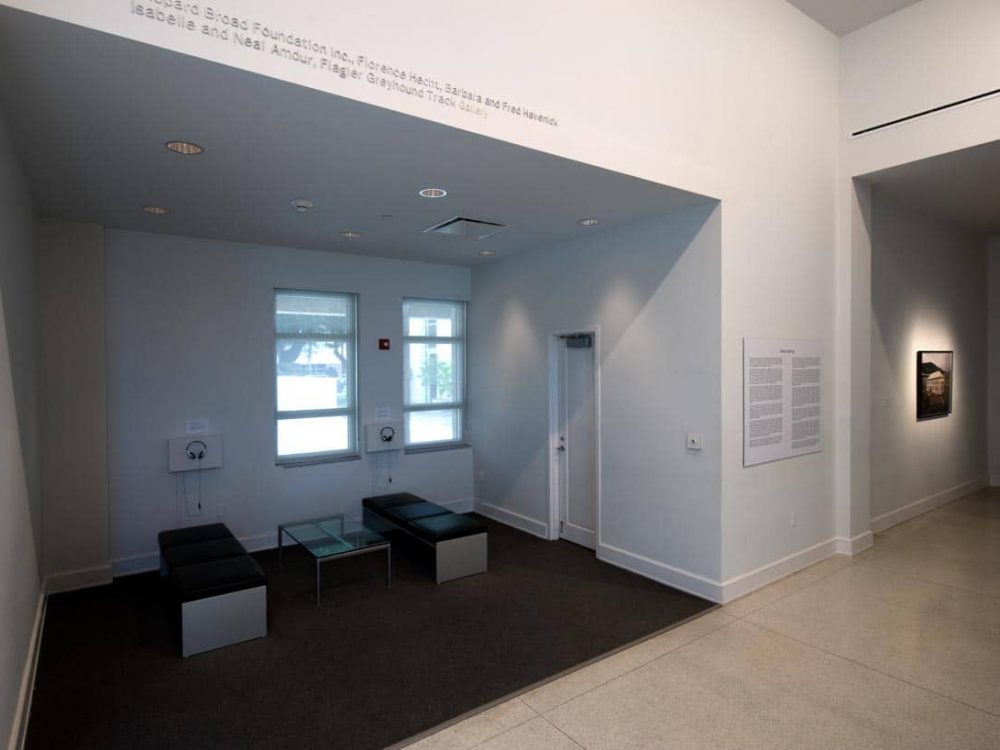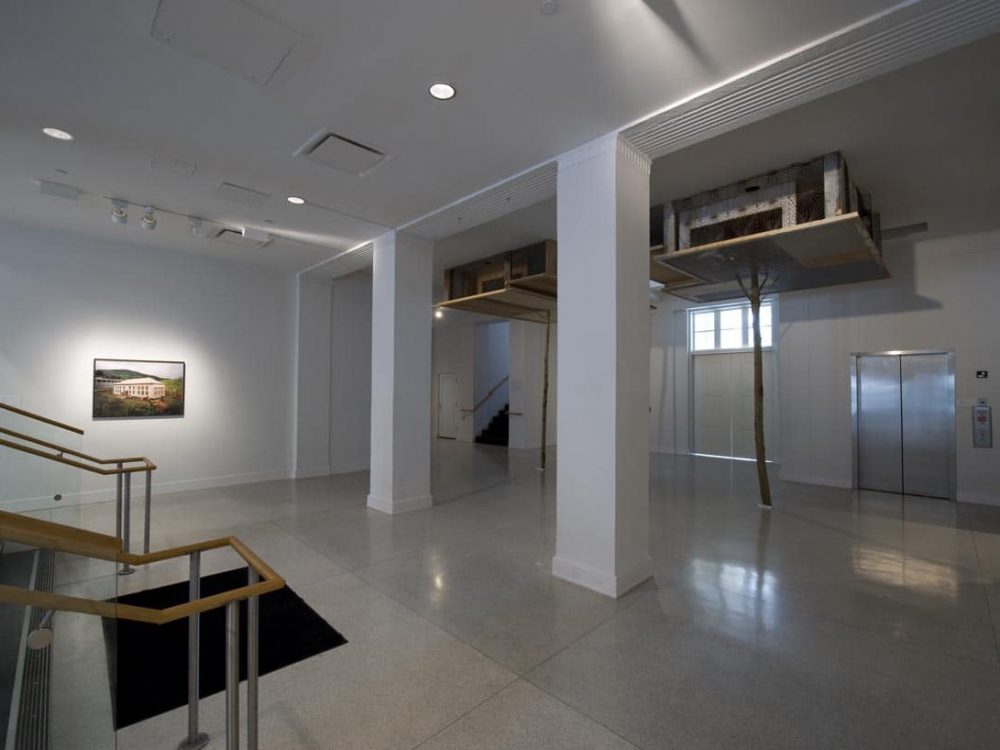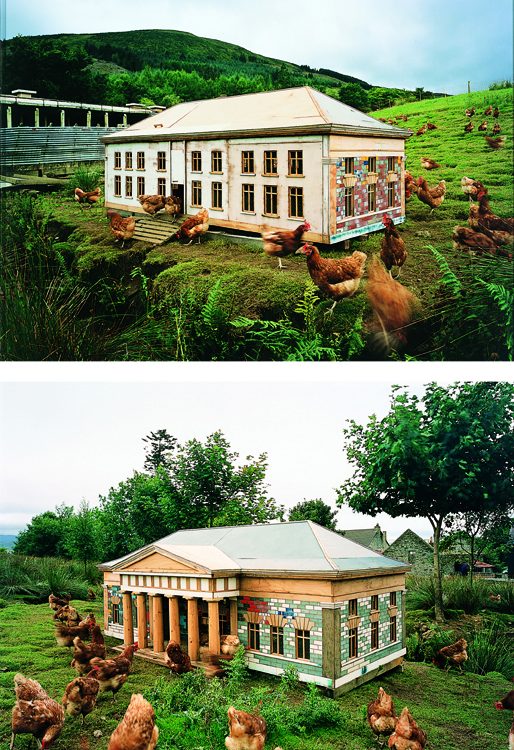simon starling
Simon Starling is known for his rigorous investigations and his ability to incorporate complex narratives into constructed objects. His artistic process includes performative elements and references to music, Modernist architecture, design and environmentalism. “Starling’s world, in fact, is perennially in motion: within its fluid borders objects get transformed, values exchanged, contexts overlapped.”(Massimiliano Gioni)
Inverted Retrograde Theme, USA (House for a Songbird) consists of two scale-models of single-family homes, turned upside-down and installed onto the ceiling, propped up by tropical branches. While researching Austrian Modernist musician Arnold Schoenberg (1874–1951), Starling learned about the work of Austrian architect Simon Schmiderer (1911–2001). In 1952, Schmiderer was commissioned by the New York-based Rockefeller Foundation to design a housing project in Bayamón, Puerto Rico, a city near San Juan. At that time, Schmiderer, a follower of Schoenberg, experimented with incorporating Schoenberg’s musical principles into the production of this building project.
Schoenberg had developed a twelve-tone system, in which no single musical note was of greater importance than the other. In translating this theory to architecture, Schmiderer decided to give building materials no hierarchy of importance. The Bayamón houses were constructed entirely of concrete blocks. The design omitted doors and glass windows to enhance the openness of the floor plan; which not only cut construction costs, but allowed for greater air circulation in the warm climate. What Schmiderer failed to predict was that the crime rate rise in the 1970s would render these homes insecure. Residents then, had to modify the houses, adding wrought-iron screens, which Starling faithfully reproduced in his models.
Starling further adds his own references to Schoenberg by using the musician’s theory of “inversion” – the original note sequence rises in tone, the “inversion” falls – and flips the models upside-down. These two designs, #2 and #4 Calle Victoria, are mirror images of each another, a direct reference to Schoenberg’s theory of “retrograde”, in which an original note sequence is played backwards. In a final ironic reference to musical influences, two finches (represented here in a recording) inhabit the models, which have become perfect “cages” for their inhabitants.
Simon Starling was born in 1967, in Epsom, United Kingdom. His work is in the permanent collection of the Tate Modern, London; Moderna Museet, Stockholm; Solomon R. Guggenheim Museum, New York; Kroller Muller Museum, Netherlands; San Francisco Museum of Modern Art; and the Museum of Contemporary Art, Chicago, among others.
